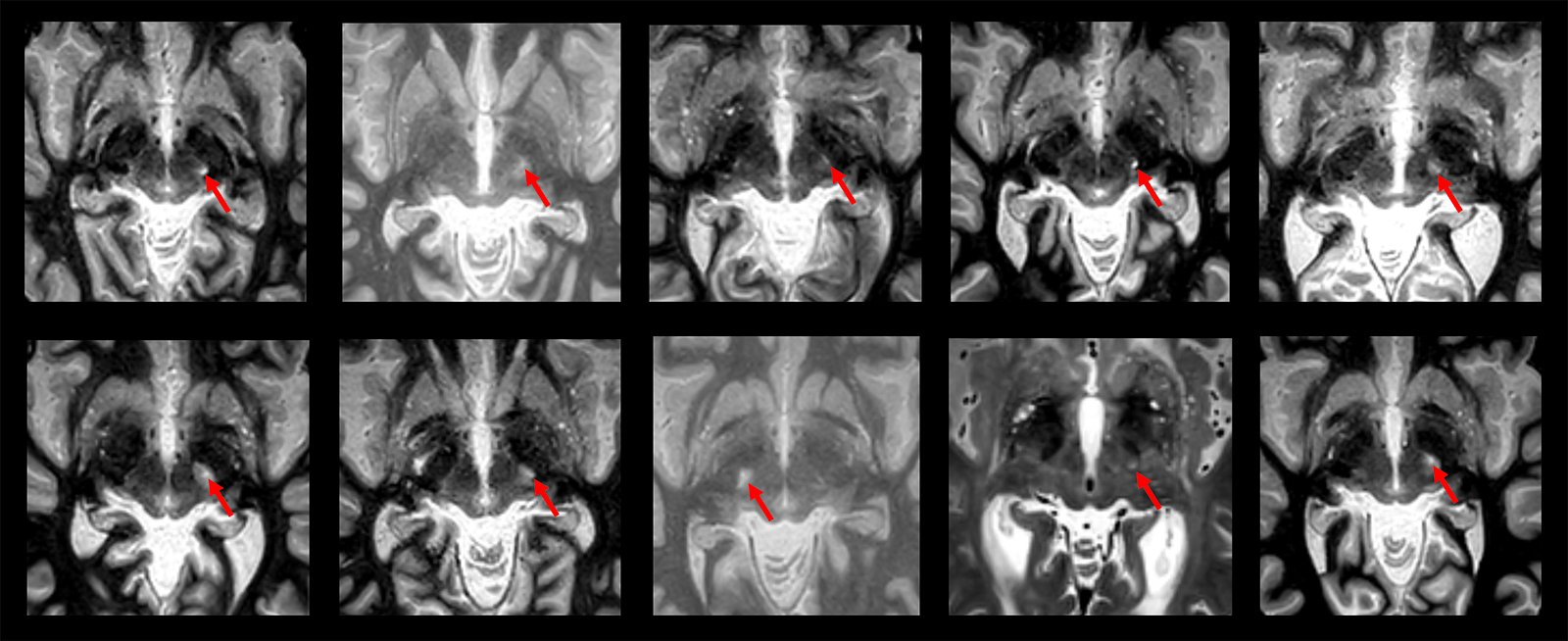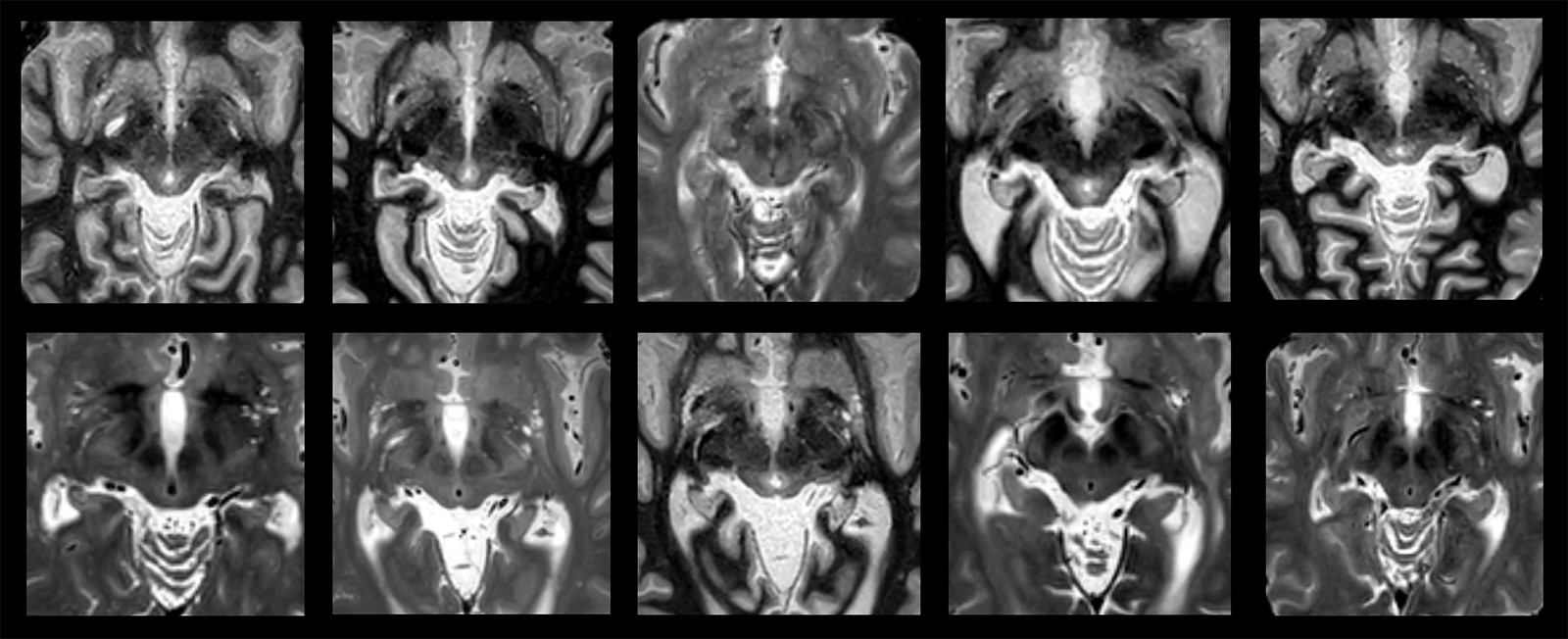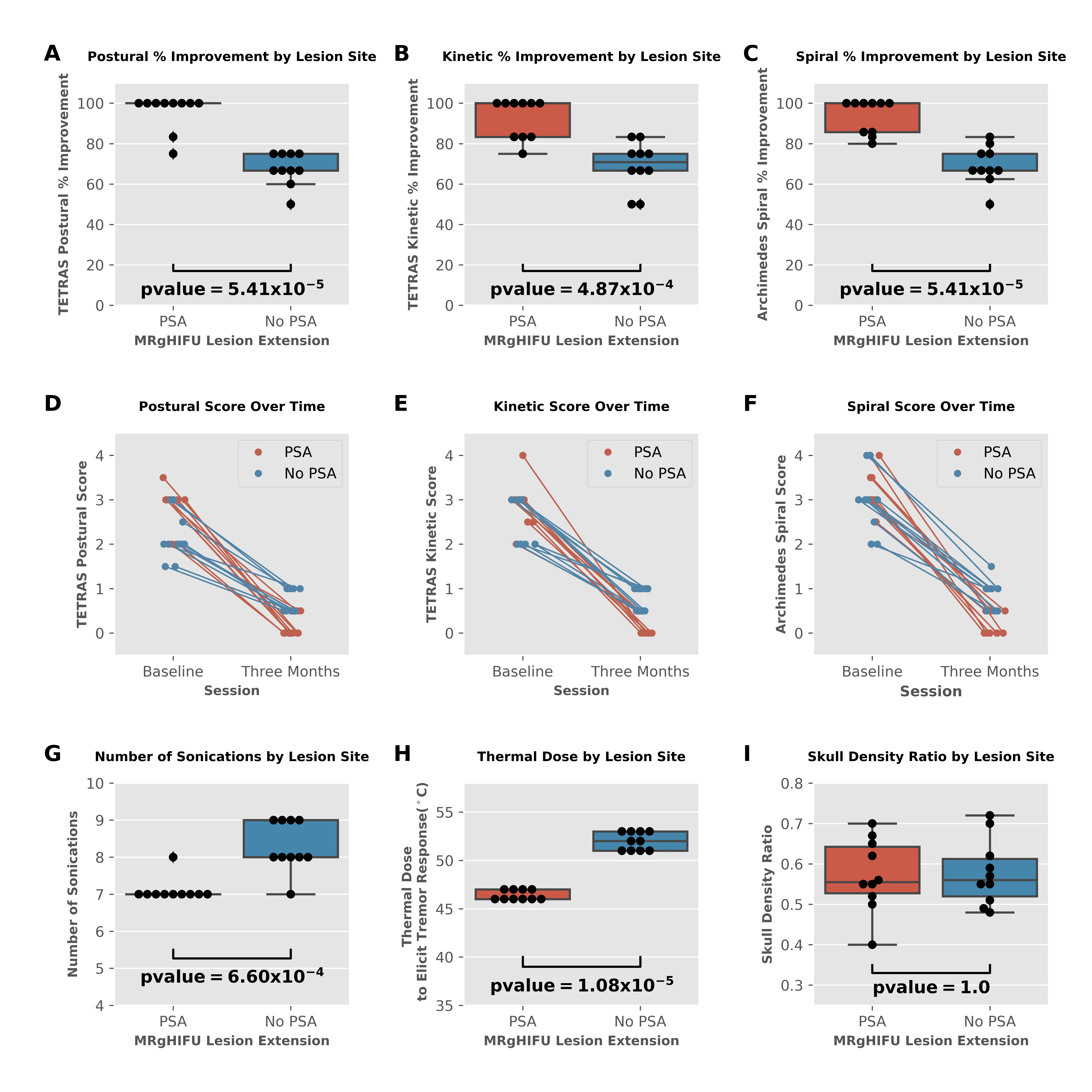Objective: This study sought to determine if, when using four tract tractography (FTT) to target the decussating and non-decussating dentatorubrothalamic tracts (DRTTs), essential tremor (ET) patients with MR-guided high intensity focused ultrasound (MRgHIFU) lesions that extend into the posterior subthalamic area (PSA) have greater tremor improvement than those without.
Background: Thalamic ablation with MRgHIFU is an incisionless therapy for ET. Because the MRgHIFU lesion is a prolate spheroid with a larger radius in the craniocaudal direction, MRgHIFU centers routinely target 2 mm superior to the anterior commissure-posterior commissure plane (ACPCP) to avoid injury to structures inferior to the ACPCP. Our center uses an advanced targeting technique, FTT, in which diffusion tensor imaging is used to identify the DRTTs for targeting, while the corticospinal (CT) and medial lemniscus (ML) are identified to be avoided. To avoid damage to the CT and ML, in some patients we chose to target 1.2-1.5 mm superior to the ACPCP. Post-procedural imaging revealed that in these patients the MRgHIFU lesion extended into the PSA.
Method: Group 1 (n=10) were those with MRgHIFU lesions extending into the PSA. Group 2 (n=10) were those without MRgHIFU lesions extending into the PSA. The Essential Tremor Rating Assessment Scale was used to determine postural and kinetic tremor scores at baseline and at a 3-month follow-up for each patient. Additionally, baseline and follow-up Archimedes spirals were scored. Wilcoxon rank-sum tests were used to compare the percent improvement in tremor scores, total number of sonications, thermal dose, and skull density ratio between groups.
Results: Group 1 had significantly greater percent improvement in postural, kinetic, and Archimedes spiral score than Group 2 (p-values: 5.41×10-5, 4.87×10-4, and 5.41×10-5, respectively). Group 1 also required significantly fewer total sonications and required a significantly lower thermal dose to achieve tremor response during the procedure (p-values: 6.60×10-4 and 1.08×10-5, respectively). No significant group differences in skull density ratio were observed (p-value=1.0).
Conclusion: When using FTT, MRgHIFU lesions that involve both the thalamus and PSA provide greater ET control than those that only involve the thalamus.
To cite this abstract in AMA style:
J. Holcomb, R. Chopra, F. Feltrin, M. Elkurd, R. El-Nazer, L. Mckenzie, P. O’Suillebhain, J. Maldjian, W. Dauer, B. Shah. Improved Tremor Response to Focused Ultrasound Thalamotomy [abstract]. Mov Disord. 2023; 38 (suppl 1). https://www.mdsabstracts.org/abstract/improved-tremor-response-to-focused-ultrasound-thalamotomy/. Accessed December 27, 2025.« Back to 2023 International Congress
MDS Abstracts - https://www.mdsabstracts.org/abstract/improved-tremor-response-to-focused-ultrasound-thalamotomy/



